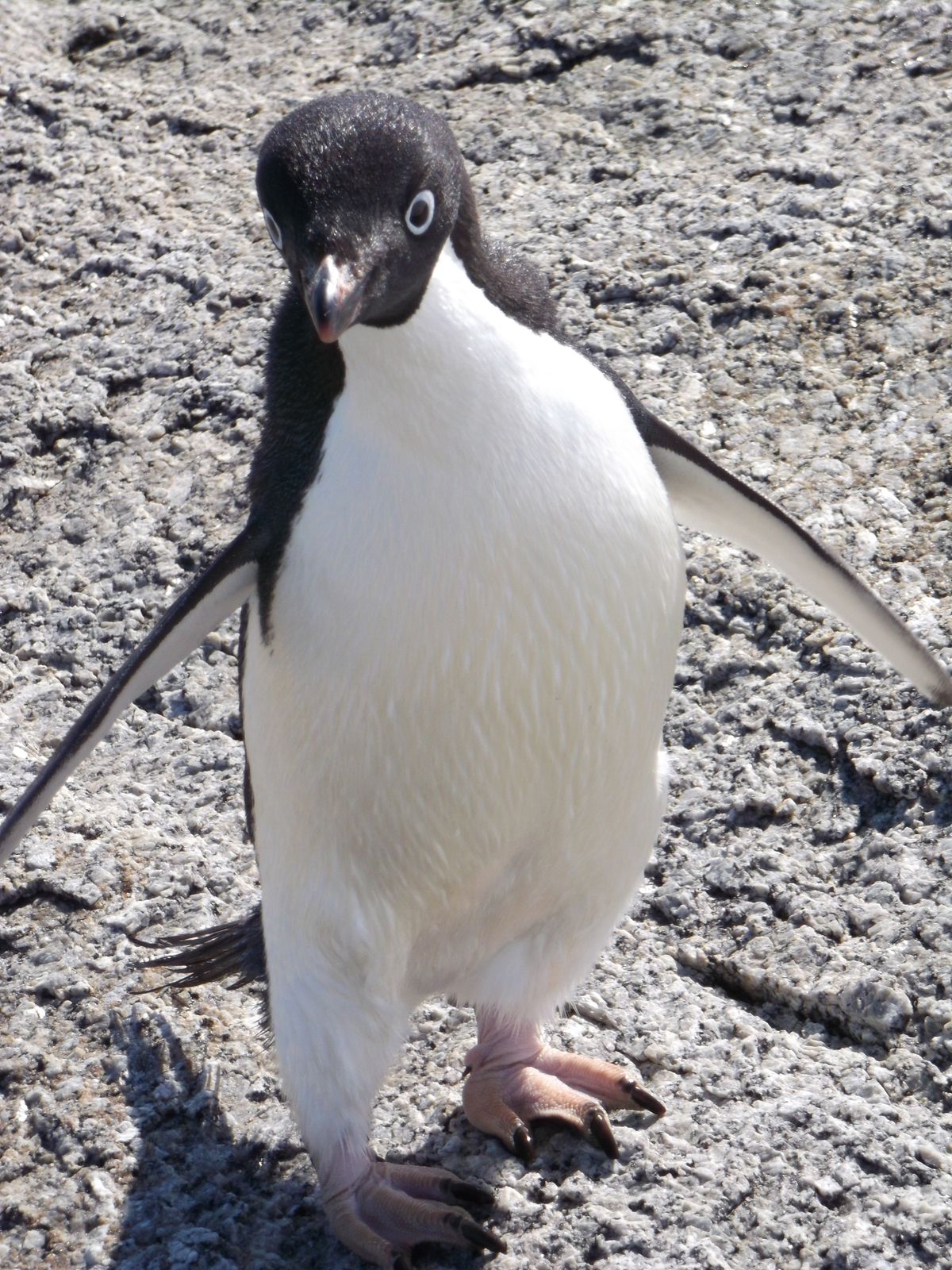Inner Infinity
From where do new ideas come? Do they pop out of the aether as some random ashes of inspiration with no obvious precedent? Or do these ideas mostly already exist, but in a completely separate setting. As such, does the creative spark really consists of taking some pre-existing idea from its usual setting and transplanting it into an unfamiliar setting where it may provide new insights into old unsolved problems?
In the midst of over one hundred plant species, the last brown-eyed susans grow at the foot of the dying cherry tree near the pond. Time is all about our own perceptions. Although we can’t hold on to it, the past stays with us in the form of a conversation, a wrinkle, a memory that does not cease to exist as the next instant appears. Multiple flows into the flow of time are turbulent waters, sounds of strings. Time is an invisible luggage that gets heavier with memories and footprints. Perceptions and feelings merge in my head. Whether we are conscious of them, those “little perceptions” are traces of time.
The elusive quality of timelessness creates in my mind the image of a time void in which countless subjective experiences of time arise. If time is a process, is there an outcome? A process is a function that maps the state of a system at a given time to the state at a future time. We can think of the state in the past as a 'preparation' and the one in the future as the outcome of a 'measurement'. If there is an outcome, could we determine what it will be if we grasp all the nuts and bolts involved in the process? The gaps in our mind mirror the gaps in time between present and future, between what is unseen and what is visible.
Functionalism may be the underlying reason why spacetime emerges from the fundamental non-spatiotemporal structures of the quantum Universe. Particles in a quantum state are delocalized and entangled during superposition. What drives the dynamic localization that results in the collapse of the wave function, and why would it be consciousness anyway? The wave function per se is a universal instrument of knowledge, transcending between any two scales, particularly between quotidian world and cosmological scales of the theoretical physics. Let us say that we zoom out from the Earth, aren’t the simultaneity of physical flows and the temporal synchrony of macroscopic events similar from above to a bundle of superposition states?
...what exactly do we mean when we say spacetime `emerges' from some non-spatiotemporal reality? Before anything else, it should be emphasized that quantum gravity is very much a work in progress, and hence we cannot hope to command a conclusive understanding of the situation just yet. In that sense, the term `emergence' serves as placeholder for a relation the investigation of which is part of the very project of quantum gravity: it is, as it were, a working title for that relation.
In a chapter on the Cinematographical Mechanism of Thought and the Mechanistic Illusion, Henri Bergson wrote that "what is real is the continual change of form: form is only a snapshot view of a transition". The mystery lies in-between, in how an interconnected web of microscopic quantum systems leads to the emergence of macroscopic quantum processes and how collective macroscopic quantum forces play a role in the emergence of biological structure. While we study the various growth patterns exhibited by nature, we become familiar with quantum effects. Those quantum processes may be observed in biological systems such as with the laboratory-based growth of plant-like structures from inorganic materials or in the case of quantum entanglement among chlorophyll molecules. Researchers have been working on highly macroscopic quantum states, using for example the Long-Baseline Universal Matter-Wave Interferometer. The debate on whether quantum mechanics plays a role in biological organisms has led to the finding of long-lived quantum coherence in noisy environments, such as proteins.
Time is made of loops of temporalities hanging from a single flow. Those physical and biological cyclicities are fractals of time. Fractal geometry could help contextualize and visualize transition stages, emergence phenomena, and spatiotemporal scales that split the Universe into endless segments. Fractals represent universe-wide patterns of multiscale integration. According to the scale relativity theory, the description of the world is legitimate as a fractal fluid of free particles. It may bring into light a unitary view of matter. It is a theory of self-organization describing scale-dependent physical phenomena, in which various scales are not absolute but only relative. It means that only ratios of scales do have a physical meaning, not a scale by itself.
One of the key objectives of the theory of scale relativity is to develop a new, first principles, geometric approach to understanding the foundations of quantum theory that may ultimately lead to a unified theory of quantum mechanics and general relativity. Although a completely unified approach remains an outstanding challenge, development of the theoretical framework has led to progress in addressing a number of important fundamental questions relating to standard quantum mechanics, in addition to a new (analogous) theoretical framework of macroscopic quantum systems that can lead to a better understanding of biological systems.
Fractals are considered to be "a model of time" that could potentially relate consciousness and cosmology. They are defined by the range and level as well as the upper and lower limit of self-similarity. Whether they show infinite depth within a finite area or whether they are uncomputable fractal attractors in the infinite future, they appear to be a fundamental feature of spacetime.
Every puzzle solved leads to more unsolved mysteries. Our mind dives into open cracks and breaches and scrambles to climb back out. Those mental cracks and breaches are our inner infinity. If the Universe did design itself, were fractals intentionally factored into the preparation stage of the process or did it happen along the way as an outcome of the design itself? I would agree with Philip Goff that the universe, although physical, acts, and only acts, through a basic capacity to recognise and respond to reasons. Causality and fractal geometry appear to account for fine-tuning. I still feel though that fractal geometry does not exclude the concept of a Universe of “wholes as ‘built up’ from parts”. Having said that it also appears to respect continuity of action, one fundamental aspect of the theory of Superdeterministism.
If, during the Plank epoch, the early universe fine-tuned the laws to bring about life billions of years in the future, then it must have in some sense known, or been aware, of the future consequences of its actions.
/image%2F3093645%2F20200620%2Fob_cc80b1_img-0827.jpg)
Out of the Dark Ages - Consciousness and the Universe
"How did the Universe come into being?" asked John Archibald Wheeler , " Is that some strange, far-off process, beyond hope of analysis? Or is the mechanism that came into play one which all the ...
http://www.consciousnessanduniverse.com/2020/06/out-of-the-dark-ages.html
My mind enjoys counting games. In the exchange between two sets of quadruple elements, I wonder whether the six spatial and temporal scales in the Human Physiome Project -- atom, protein, cell, tissue, organ and organ system & organism -- mirror the six spatiotemporal scales in the Universe that are star, star system, galaxy, cluster, supercluster, and filament.
The thing is that in order to invent a theory of everything, we ought to go deeper and the further we travel in time and space, the deeper we need to go as if we were extending our arms hoping to catch something that still remains beyond our reach. A theory of everything may in a sense be in constant evolution.
In some tucked away part of my memory, there is for now a closed chapter of Buddhist studies. What if the entire socio-cultural system, including fields of religion and philosophy, was designed like a series of fractals? Even cosmic consciousness would end up being a fractal infinitely enriched by individual consciousnesses. My autobiographical self recalls that the Buddha is "at least partly a function of and dependent on his being embodied in others". The word 'embodiment ', used to describe the numerous ways to communicate the Buddhist scriptures and the Buddha's countless manifestations, reflects the fractality of Buddhist teachings. Gene Reeves writes that in the Dharma Sutra, "reality and togetherness of being both one and many are affirmed". We all are in our own way the embodiment of a collective consciousness.
Kerri Welch, A Fractal Topology of Time: Deepening into Timelessness
Gottfried Wilhelm Freiherr von Leibniz, New Essays Concerning Human Understanding
Gene Reeves, The Stories of the Lotus Sutra & The Lotus Sutra: A Contemporary Translation of a Buddhist Classic
/image%2F3093645%2F20201024%2Fob_8c6c54_img-1362.jpg)
/image%2F3093645%2F20201016%2Fob_5da15b_img-1299.jpg)
/image%2F3093645%2F20201010%2Fob_4a8648_all-that-glitters-in-the-brain.jpg)
/image%2F3093645%2F20201004%2Fob_86ecfd_a-freggs-cellent-discovery.jpg)
/image%2F3093645%2F20200928%2Fob_fa5f70_img-1238.jpg)
/image%2F3093645%2F20200920%2Fob_76b93d_galcenfignicmos-opacity15percent-bigge.png)
/image%2F3093645%2F20200915%2Fob_506cbc_blackhole20190410.jpg)
/image%2F3093645%2F20200909%2Fob_609370_uncovering-the-secrets-of-the-quintupl.jpg)
/image%2F3093645%2F20200902%2Fob_5583e9_img-1145.jpg)
/image%2F3093645%2F20200824%2Fob_9e073c_oxeye.jpg)
/image%2F3093645%2F20201024%2Fob_8feda8_img-1360.jpg)
/image%2F3093645%2F20201024%2Fob_38177a_img-1362.jpg)
/image%2F3093645%2F20201024%2Fob_e337a9_img-1329.jpg)
/image%2F3093645%2F20201016%2Fob_c468ed_img-1299.jpg)
/image%2F3093645%2F20200410%2Fob_728554_lagoon-nebula.jpg)
/image%2F3093645%2F20201016%2Fob_c0debb_img-1300.jpg)
/image%2F3093645%2F20190207%2Fob_53ab55_wading-through-water.jpg)
/image%2F3093645%2F20201016%2Fob_5b3993_img-1301.jpg)
/image%2F3093645%2F20201016%2Fob_7ba186_img-1303.jpg)
/https%3A%2F%2Fwww.allaboutbirds.org%2Fguide%2Fassets%2Fog%2F75266781-1200px.jpg)

/https%3A%2F%2Fimages.squarespace-cdn.com%2Fcontent%2Fv1%2F56365337e4b088f9f3341db2%2F1446408575316-IZLJ2RFFYEKND4NM1HX1%2Fke17ZwdGBToddI8pDm48kIPvmmymHTolmTRmIgZp6SNZw-zPPgdn4jUwVcJE1ZvWQUxwkmyExglNqGp0IvTJZamWLI2zvYWH8K3-s_4yszcp2ryTI0HqTOaaUohrI8PIzi2-70YgsPvbweJhefcu6cJxcUGLk47CDwatabYQ-sMKMshLAGzx4R3EDFOm1kBS%2FSB5s.jpg)
/http%3A%2F%2Feast.zornitsadesign.netdna-cdn.com%2Fwp-content%2Fuploads%2F2017%2F03%2FBrainbow-Hippocampus-in-Color.jpg%3Fx50652)
/http%3A%2F%2Fwww.humanconnectomeproject.org%2Fwp-content%2Fthemes%2Fconnectome%2Fimages%2Fhomeimage.jpg)
/image%2F3093645%2F20201004%2Fob_248d63_a-freggs-cellent-discovery.jpg)
/image%2F3093645%2F20200928%2Fob_82ab0a_img-1238.jpg)
/image%2F3093645%2F20201002%2Fob_9208ca_img-1250.jpg)
/image%2F3093645%2F20200519%2Fob_80f1ac_blue-flag-iris.jpg)
/image%2F3093645%2F20200422%2Fob_ae0c2b_cygnus-loop-nebula.jpg)
/image%2F3093645%2F20200702%2Fob_c5d777_silver-linings.jpg)
/image%2F3093645%2F20201006%2Fob_1af60f_img-1266.jpg)
/image%2F3093645%2F20200920%2Fob_1104e1_disarray.jpg)
/image%2F3093645%2F20200212%2Fob_c32459_cosmic-rays-observed-from-mars.jpg)
/image%2F3093645%2F20200920%2Fob_769382_serpens-croppedv3-final-cms.png)
/image%2F3093645%2F20200920%2Fob_7829e5_galcenfignicmos-opacity15percent-bigge.png)
/image%2F3093645%2F20191117%2Fob_a4dca4_solarwind.png)
/image%2F3093645%2F20200920%2Fob_bc03a6_img-1210.jpg)
/image%2F3093645%2F20200428%2Fob_92aef7_glenstone-18-08-tpa-3035.jpg)
/image%2F3093645%2F20200915%2Fob_e5c30b_blackhole20190410.jpg)
/image%2F3093645%2F20200915%2Fob_a7730b_eht-3c279-figure1-l.png)
/https%3A%2F%2Fepsilon.aeon.co%2Fimages%2Ff45bf770-ae37-439d-a6df-660d2de0217a%2Fheader_essay-final-lon19712.jpg)
/image%2F3093645%2F20200909%2Fob_2ca085_uncovering-the-secrets-of-the-quintupl.jpg)
/image%2F3093645%2F20190105%2Fob_fa4381_roof.JPG)
/image%2F3093645%2F20200909%2Fob_aaea7e_1567214633186-esa-stellarevolution-128.jpg)


/image%2F3093645%2F20200514%2Fob_9d99dd_img-0430.jpg)

/image%2F3093645%2F20200611%2Fob_e4ac3b_img-0706.jpg)








/image%2F3093645%2F20200519%2Fob_27094a_blue-flag-iris.jpg)